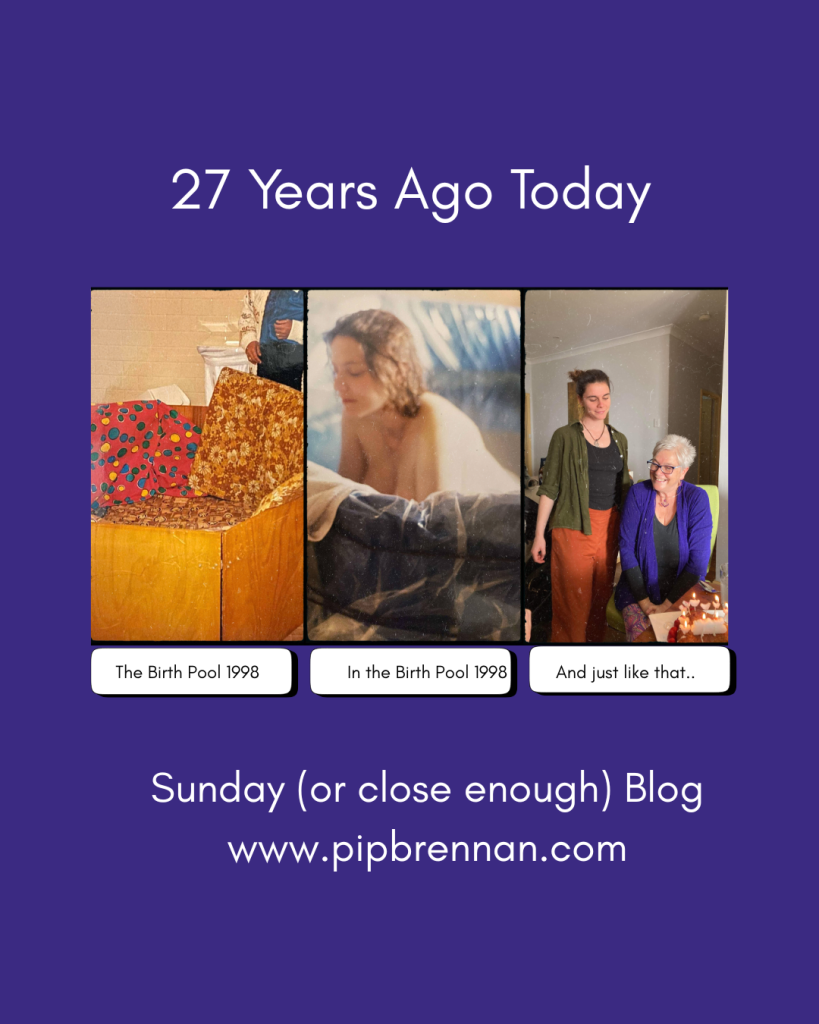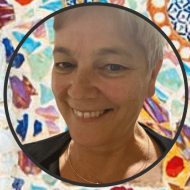(Almost) Sunday Blog 206 – 27th October 2025

I delayed the Sunday Blog to 27th October so I could marinade in all the twenty-sevens. Because twenty-seven years ago today in 1998 I was in labour in a birthing pool. And now, darling daughter is twenty-seven. (Or she will be tomorrow, because labour can take a while…)
Also, because I attended a recent conference, Strength to Progress, for people wanting to see change in the birth world. In a moving, thought-provoking documentary, “Five decades of water birth in WA,” I was the poster girl for water birth in the 1990s, contributing two of the images above. The film was put together by a couple of powerhouses; Lisa from Simply Birth and Cath from Nurture and Bloom.
Top left photo was the birthing pool I hired – that’s what we used in Perth before Simply Birth began importing the blow up ones in 2006. Back in 1998 I’d had to hire the octagonal wooden monster from the midwives running Perth’s home birth program. Heavy wooden panelling no pregnant woman could safely lift. Mattresses. Tarpaulin. Cover sheet. Giant ockey straps. This contraption was delivered by long-suffering relatives to Swan Districts Hospital where I was due to have my baby at the family birth centre.
‘Those mattresses look like someone has died on them,’ my sister said.
Cruel, but fair. However, once the mattresses were covered up it was quite respectable, even inviting, as hopefully shown in the middle photo.
Just imagine how wondrous a boon it was to Perth (and indeed all of Australia) when Simply Birth pools became available in 2006. They could be brought along to hospital in a small box and blown up in five minutes. But back in 1998 there wasn’t even a water birth policy. If I’d been having a baby in Sydney in 1998, it all would have been very straightforward. In conservative Perth, it was not.
In 2025 there have been many advances and improvements for women and babies. But. Strength to Progress keynote speaker Dr Bashi Kumar-Hazard highlighted what to me is the core of the ongoing issue, and not just in maternity care. Models of care. The invisible web of pre-determined choices that the everyday, non-clinical person will be completely oblivious to. How can we provide informed consent, when we don’t understand the options?
It’s like turning up to a chess tournament with a working knowledge of how to play Solitaire. You’re screwed. When a woman comes into hospital with a birthing plan, she will usually be unaware that the hospital has their own birthing plan. Their model of care that she will need to comply with.
And for every health intervention in a hospital, there will be a model of care that’s nearly always completely opaque to the patient. From that information asymmetry can flow unnecessary suffering and harm.
And so, twenty-seven years after giving birth to my daughter and emerging as a health advocate, I am still passionate about people being able to make informed health choices. My work might look very different today, as I now focus on digital health, but the underlying challenge remains the same.
Give us information so that we can make the right choices for ourselves, our bodies, our health, our lives.
